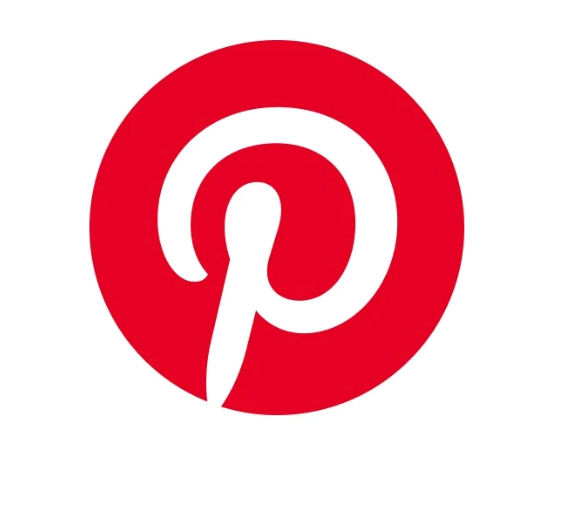It’s growing fast — 4,291 stores so far, with another 365 to open this year and a projected 7,000 stores by 2010. It’s growing smart: Stores are built in prime locations, funded by the $1 billion in cash on Walgreen Co.’s balance sheet. Only a handful of stores — 11 Hi-School Pharmacy stores in Oregon and Washington, for example — come through acquisition.
Now it needs to grow non-pharmacy business. Walgreens’ rise could change the landscape for grocers and mass merchandisers as the No. 1 drug store chain presses harder for packaged goods sales.
Competitor CVS is also expanding its front-end (non-prescription) sales and adding 250 stores this year (see sidebar). Walgreens surpassed CVS in number of stores in 2003.
“Drug stores were caught in no man’s land — they were inconvenient, serving an aging population, with an unattractive product selection,” says Ken Harris, partner with consultancy Cannondale Associates, Wilton, CT. “So Walgreens added to its merchandise mix a reasonable offering of everything and targeted families.”
Walgreens’ sales have almost doubled since 1999, topping $32.5 billion for fiscal 2003 (ended Aug. 31). First-quarter sales rose 16.5% to $8.7 billion, with prescription sales up 19% for the quarter ended Nov. 30. Front-end sales rose nearly 8% for the quarter, the biggest improvement in nine years.
General merchandise sales have steadily slipped, now just 26% of fiscal 2003 sales, down from a five-year high of 36% in 1999. Because the pharmacy is its core, Walgreens is insulated when front-end sales go soft, as they did in the first half of 2003. Prescriptions drive the bottom line, but increasing packaged goods sales will fatten the profit margin.
Prescription drugs account for 62% of Walgreens’ sales; over-the-counter drugs comprise 12%. But selling drugs is expensive, with costly inventory and labor, and tight margins. Packaged goods can top up shopping carts more profitably. Drug stores’ food sales are growing 1% to 2% a year, and HBC sales are up 3% to 4%, per Cannondale Associates. (Generic drug sales will grow as patents expire by 2006 on branded drugs that sold about $40 billion in 2001. Generics can drive volume and have more profit margin than branded drugs.) Since nearly 40% of U.S. households shop at Walgreens, per ACNielsen, the chain wants to take advantage of that traffic.
One surprising segment for all drugstores is teens, especially girls, who like to browse cosmetics and greeting cards and find stores’ convenient locations conducive to hanging out. That dovetails with Walgreens’ efforts to expand candy offerings and get new products first.
“Walgreens is not an exciting merchandising venue, but they’re incredibly solid,” Harris says.
Walgreens’ front-end sales started slow in fiscal 2003 but by fourth quarter, Walgreens gained market share against all food, drug and mass-merchandise competitors in 55 of its top 60 front-end categories. Walgreens credits better in-stock merchandising, and service; the Deerfield, IL-based chain spent two years upgrading its technology and training staff in its purchasing department.
Walgreens tailors each store’s merchandise mix to the neighborhood. The chain uses its nine-year-old database, managed in-house, to pinpoint the right items for each store.
One priority has been tailoring merchandise and marketing for Hispanics. In August Walgreens launched Walgreens-Espanol.com, the first Spanish-language Web site from a pharmacy. “Our Puerto Rico stores and other locations that serve Hispanic communities have told us about the need for this kind of resource,” said Walgreens director of E-commerce Tim McCauley in a statement. “It’s a great opportunity to extend our online healthcare services to millions of people.”
Take TV and call me
Meanwhile, Walgreens protects its Rx turf with a 30-minute TV show airing nationally via WGN. The weekly Walgreens Health Corner debuted in January, hosted by pediatrician and rehab specialist Lisa Thornton.
Stories cover current health issues including emotional health, research and medical breakthroughs, answers to common medication questions and drug tips from Walgreens pharmacists. The show could reach 56 million households.
“We’re taking our health care message beyond our traditional consumer audience,” said Craig Sinclair, Walgreens divisional VP-advertising in a statement.
Walgreens has targeted California, North and South Carolina, Florida, Texas and Washington state for expansion this year. William Rudolphsen began as CFO in January; he had been divisional VP-accounting and controller and has been with Walgreens for 26 years.
Walgreens is still under investigation by the attorney general of Florida for its role in a 2002 sampling effort that sent unsolicited Prozac Weekly samples to about 300 Florida residents (September 2002 PROMO). The incident is still under investigation, according to the attorney general’s office. It began when an invasion-of-privacy lawsuit charged Prozac maker Eli Lilly & Co., Walgreens and a hospital and doctors for allegedly mailing samples of Prozac Weekly to patients who had been treated for depression. Walgreens allegedly filled and mailed the prescriptions in exchange for reimbursement via product-sample coupons from Lilly. Walgreens didn’t return calls for comment.
Mix n’ Match at CVS
The second-biggest drugstore chain plans to add 250 stores this year to its current 4,179 stores in 32 states. Between 100 and 125 will be new construction; 75 to 100 are relocations. CVS will close about 50 stores. The Woonsocket, RI-based chain projects 2004 sales of $28 billion, continuing the momentum it began in 2003 with investments in technology and marketing. CVS sales hit $26.6 billion in 2003, up 10%. The chain gained market share in 42 of 47 front-end categories in 2002, the latest year available.
Like Walgreens, CVS tailors stores’ merchandise mix by locale, with prepared food in business districts and suitcases in Las Vegas. Cosmetics merchandising, dubbed “Beauty at the Door,” is in 1,000 stores. Its Baby & More aisle and Home Health Care aisle, both begun in 2002, may expand to more stores this year.
CVS has signed 33 million members for its three-year-old ExtraCare loyalty program. Cardholders get customized coupons, ExtraBucks rewards, and tailored healthcare information; cardholders account for half of CVS’ front-end sales. Members can opt in for tailored mailings on baby care, senior health or diabetes.
A Trip to the Drugstore
Recreational drug use has prompted pharmaceutical makers to re-examine whether some over-the-counter drugs should be shelved behind the counter instead. Teens and young adults are “robotripping” on high doses of dextromethorphan (DXM), an ingredient common to OTC cough and cold medications. DXM gives a hallucinogenic high, but excess doses can be fatal. Calls to poison control centers have doubled since 2000, topping 3,200 in 2003.
Schering-Plough’s Coricidin HPB is especially popular among robotrippers, who call the red pills “red devils” or “skittles.” (At least 125 OTC meds have DXM, per Schering-Plough.) In mid-2003, Schering-Plough began offering retailers nationally a resource kit to help pharmacists restrict access to Coridicin. Pharmacists choose locally whether to put Coricidin behind the counter. “We can’t mandate these measures, but we support retailers’ efforts very strongly,” says Schering-Plough spokesperson Mary-Fran Faraji. “Merchandising tends to be a local decision.”
The kit includes shelf signs for the cold-remedy aisle, directing shoppers to ask the pharmacist for Coricidin; it also has product sleeves to make packages visible behind the counter. Pharmacists get “Keeping Your Kids Drug-Free” brochures with tips for parents. Schering-Plough also collaborates on parent and teacher education with Partnership for Drug-Free America, the Council on Family Health and other organizations. Coricidin has been OTC since the early 1950s. Coricidin HBP is for high-blood pressure patients who can’t take decongestants. Fifty million Americans have high blood pressure. “The challenge for us is to balance our responsibility to make this available for people who need it, and combat this social problem,” Faraji says.



